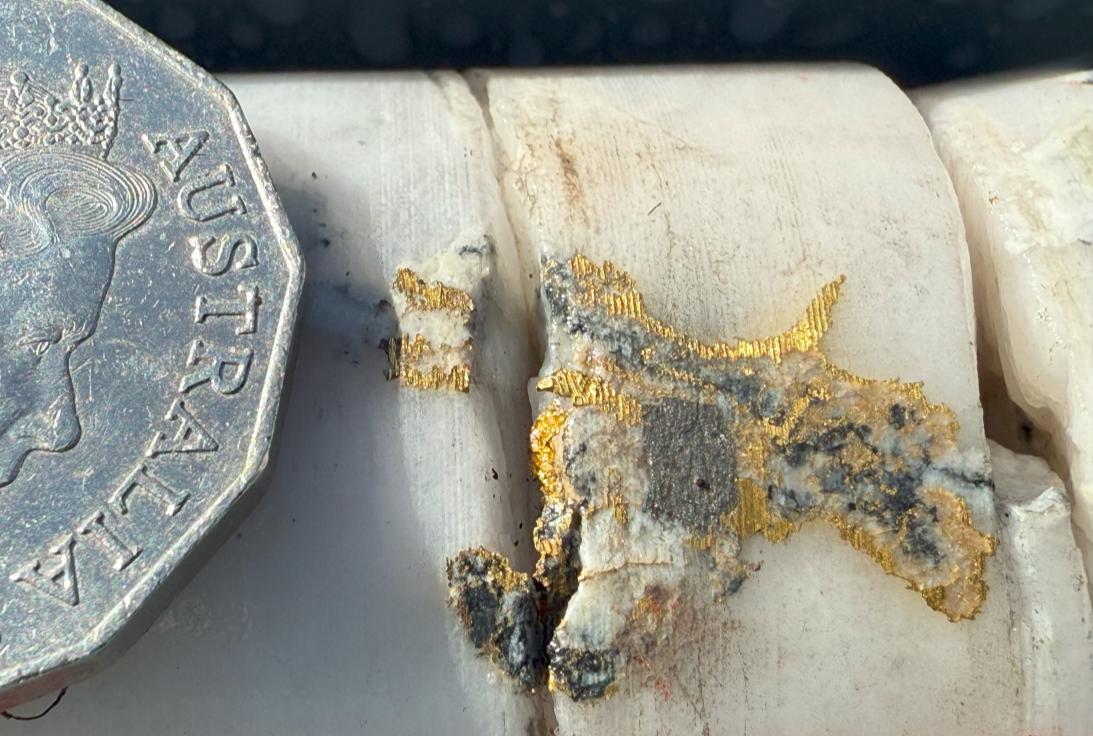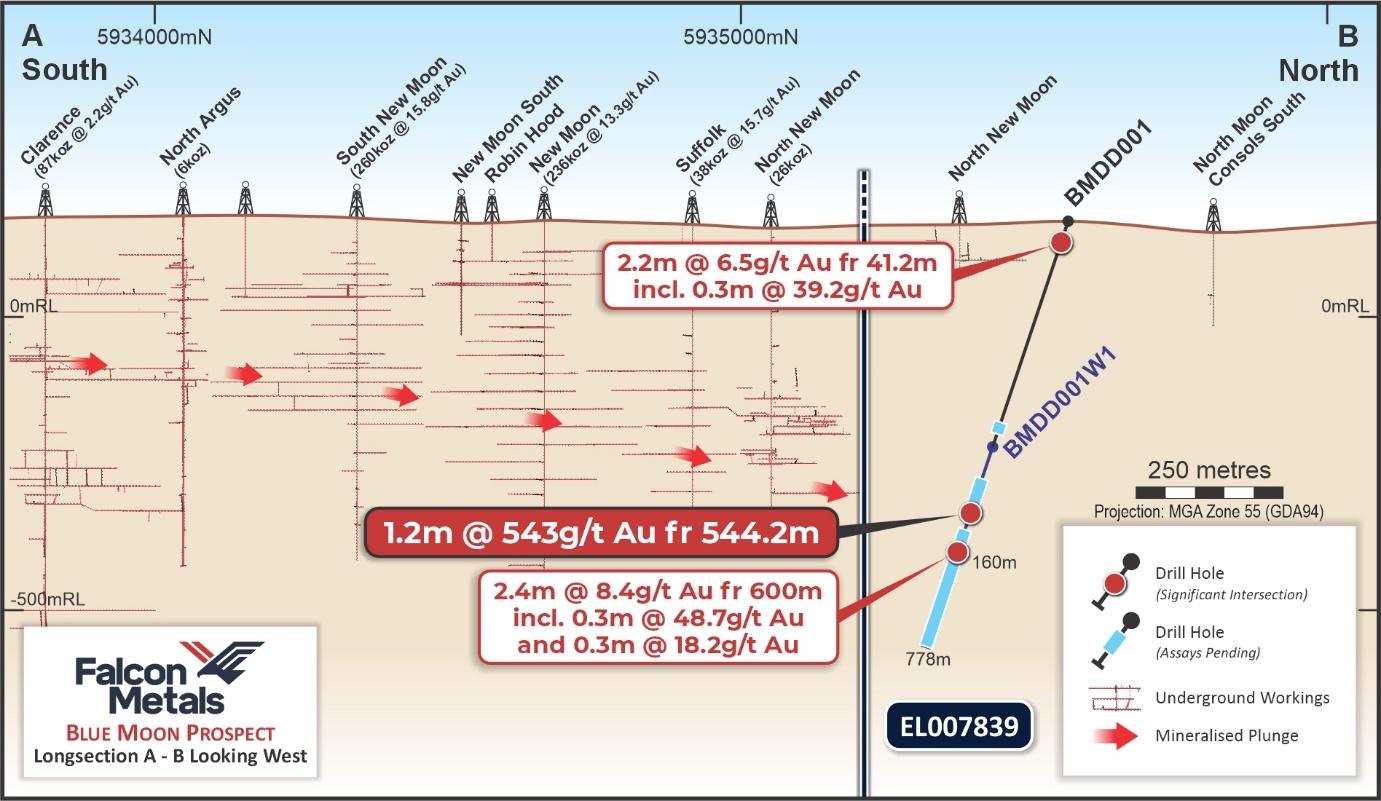Falcon Strikes Ultra-High-Grade Gold at Bendigo’s Northern Extension
7/11/2025

Falcon Metals has uncovered a standout gold intercept at its Blue Moon Prospect, just north of the historic Bendigo Goldfield in Victoria, with the first wedge hole returning a spectacular hit of 1.2 metres at 543 grams per tonne (g/t) gold.
Drilled from the parent hole BMDD001, the wedge hole (BMDD001W1) targeted a bedding-parallel quartz vein 5 metres up-dip from a previously identified structure. The result included two sub-intervals of 0.6m grading 557g/t and 529g/t gold, respectively, from a depth of 544.2 metres. Visible gold was observed in both core trays, prompting expedited assays.

The result is one of the highest-grade hits reported in Victoria in recent years and confirms Falcon’s exploration model based on the Bendigo-style fold-thrust architecture. The company believes it is closing in on the core of a potentially significant saddle reef system.
“This outstanding result from the first wedge hole at Blue Moon is highly encouraging,” said Falcon Metals Managing Director Tim Markwell. “The early success from the first phase of drilling shows the untapped potential of the Bendigo Goldfield as it continues northwards through Falcon’s ground.”
Falcon’s Blue Moon prospect sits on a 100%-owned tenement granted in 2023, covering 174 square kilometres around the historical Garden Gully Anticline. The area had seen no modern exploration prior to Falcon’s involvement.
The high-grade vein encountered is part of a structural zone that had previously shown only low-level anomalism in the parent hole, reinforcing the importance of targeting structure and pathfinder minerals rather than relying solely on early assay results.
The parent hole, BMDD001, had earlier returned notable intercepts including:
2.2m at 6.5g/t gold from 41.2m, including 0.3m at 39.2g/t
2.4m at 8.4g/t gold from 600m, including 0.3m at 48.7g/t
The current wedge hole is still in progress and expected to reach a depth of 670 metres. Falcon is now planning additional wedge holes to test areas closer to the anticline hinge, where historical data suggest wider, high-grade saddle reefs may occur.
Assay results from the remaining samples in both the parent and wedge holes are expected later this month.